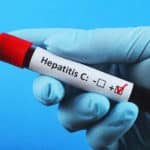Attention Baby Boomers: New Hep C Testing Protocol
An estimated four million Americans are believed to be infected with the Hepatitis C virus, an infection that can progress to severe liver damage, liver cancer or even liver failure. Improvements in testing will help identify those in the early stages of Hepatitis C infection and increase their chances of living longer, healthier lives. In response to new FDA-approved testing and a clear need for guidance, the U.S. Centers for Disease Control and Prevention (CDC) have publicized the preferred testing sequence for detecting Hepatitis C infection – a regimen particularly poignant for baby boomers.
While the damage from Hepatitis C can be prevented with early treatment, over half of Americans don’t receive proper testing for Hepatitis C. According to the U.S. Preventive Services Task Force member Kirsten Bibbins-Domingo, PhD, MD, “There are millions of Americans infected with Hepatitis C, but many are unaware of their condition, in large part because they may not have any symptoms.”
Baby boomers (those born between 1945 and 1965) account for approximately 75 percent of Americans with Hepatitis C. As such, in August 2012 the CDC advised all baby boomers to be screened for Hepatitis C. The U.S. Preventative Services Task Force followed with the same recommendation in June 2013.
While the CDC published a report explaining that the damage from Hepatitis C can be prevented with early treatment, it also revealed that more than half of Americans don’t receive proper testing. According to a study described in an August 2013 edition of Morbidity and Mortality Weekly Report, nearly half of surveyed people with Hepatitis C were not tested for the virus until they developed clinical signs and symptoms such as elevated liver enzymes or jaundice. One of the U.S. Preventive Services Task Force co-chairs Albert Siu, MD, MSPH, said, “Even though they may have no symptoms yet, the evidence is convincing that one-time screening will help find millions of Americans with the infection before they develop a serious liver disease.”
Previous guidance for Hepatitis C (HCV) testing focused on strategies to detect and confirm HCV antibody. However, a positive HCV antibody test cannot distinguish between those whose past infection resolved and those who are currently infected. Being able to detect current infection is important so that preventive services, care and treatment can be offered.
Dr. Chong-Gee Teo, Laboratory Branch Chief in the Division of Viral Hepatitis at the CDC has clarified the Hepatitis C testing regimen released in May of 2013. Based on Teo’s description, the sequence of HCV testing is:
- An FDA-approved test for HCV antibody; either a rapid or laboratory-conducted assay to detect HCV antibodies in the blood. A negative result means no Hepatitis C antibodies were found. A positive result could mean (1) a false positive result (2) there was a previous Hepatitis C infection that has resolved or (3) there is a current Hepatitis C infection.
- A positive HCV antibody test should be followed with an FDA-approved nucleic acid test to detect HCV RNA. If the results are negative, either the first test gave a false positive result or the Hepatitis C infection has been resolved. If the nucleic acid test for Hepatitis C RNA is positive, there is current Hepatitis C infection.
By beginning with an antibody test and following with an RNA test, clinicians will be better equipped to identify who has a current Hepatitis C infection. Because baby boomers are expected to be first in line for Hepatitis C screening, they will encounter this testing sequence. With the improvement in identifying who has an active Hepatitis C infection, more individuals will be able to take immediate action against the insidious progression of the Hepatitis C virus.
References:
http://www.cdc.gov/mmwr/preview/mmwrhtml/mm6218a5.htm, Testing for HCV Infection: An Update of Guidance for Clinicians and Laboratorians, Retrieved September 1, 2013,
US Centers for Disease Control and Prevention, 2013.
http://www.hivandhepatitis.com/hcv-testing-diagnosis, Hepatitis C is Often Not Diagnosed Until Symptoms Occur, Liz Highleyman, Retrieved September 1, 2013, hivandhepatitis.com, 2013.
http://www.medicalnewstoday.com/articles/262414.php, Baby Boomers Should Be Tested for Hepatitis C, Says Panel, Retrieved September 1, 2013, MediLexicon International Ltd, 2013.
http://www.medscape.com/viewarticle/808327?nlid=32344_1521&src=wnl_edit_medp_wir&uac=83651PG&spon=17, Testing for Hepatitis C: New Guidance, Chong-Gee Teo, MD, PhD, Retrieved September 1, 2013, WebMD, LLC, 2013.







